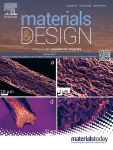|
Autores/as
Forés-Garriga, Albert; Pérez, Marco A. ; Gómez-Gras, Giovanni ; Gómez-Gras, Giovanni ; Reyes-Pozo, Guillermo ; Reyes-Pozo, Guillermo
|
Abstract
In comparison with conventional manufacturing technologies, Fused Filament Fabrication (FFF) offers countless benefits. It broadens the horizons of the design of structural components with high geometrical complexity, and lighter elements can be obtained by optimizing the infill of the part. The infill density stands as a manufacturing parameter that plays a significant part in weight reduction purposes. This fact provides FFF with an outstanding competitive advantage as compared to the rest of the additive manufacturing technologies. This work aims to investigate the role of infill parameters on the mechanical performance and weight reduction of ULTEMTM 9085 samples processed by FFF, under tensile, flexural, and shear loading conditions in six different orientations with several solid and sparse configurations. Regarding the effect of the part orientation and the infill settings, the experimental results permit to draw conclusions on stiffness, resilience, maximum stress, and type of failure of the printed parts. Three-dimensional compliance matrices for each infill configuration are provided. The analysis of the results correlates the infill configuration with the mechanical performance considering the intra-layer and inter-layer unions. Finally, this research provides experimental evidence to contribute to the definition of novel design-for-manufacturing strategies for obtaining functional structural elements by FFF.
|

WoS
Scopus
Altmetrics
 
|
